GrabCAD

Supermarine Spitfire M.KVIII (1936)
by GrabCAD
Last crawled date: 1 year, 8 months ago
The Supermarine Spitfire is a British single-seat fighter aircraft used by the Royal Air Force and other Allied countries before, during, and after World War II. Many variants of the Spitfire were built, from the Mk 1 to the Rolls-Royce Griffon engined Mk 24 using several wing configurations and guns. It was the only British fighter produced continuously throughout the war, and the Spitfire remains popular among enthusiasts, around 70 remain airworthy, and many more are static exhibits in aviation museums throughout the world, with one being as far out as Zimbabwe, said exhibit being Spitfire F Mk.22 PK355, a static display at Gweru Military Museum.
The Spitfire was designed as a short-range, high-performance interceptor aircraft by R. J. Mitchell, chief designer at Supermarine Aviation Works, which operated as a subsidiary of Vickers-Armstrong from 1928. Mitchell developed the Spitfire's distinctive elliptical wing with innovative sunken rivets (designed by Beverley Shenstone) to have the thinnest possible cross-section, achieving a potential top speed greater than that of several contemporary fighter aircraft, including the Hawker Hurricane. Mitchell continued to refine the design until his death in 1937, whereupon his colleague Joseph Smith took over as chief designer, overseeing the Spitfire's development through many variants.
During the Battle of Britain (July–October 1940), the public perceived the Spitfire to be the main RAF fighter. In fact the more numerous Hurricane shouldered more of the burden of resisting the Luftwaffe. The Spitfire was a better fighter aircraft than the Hurricane. Spitfire units had a lower attrition rate and a higher victory-to-loss ratio than those flying Hurricanes, probably because of the Spitfire's higher performance. During the battle, Spitfires were generally tasked with engaging Luftwaffe fighters—mainly Messerschmitt Bf 109E-series aircraft, which were a close match for them.
After the Battle of Britain, the Spitfire superseded the Hurricane as the principal aircraft of RAF Fighter Command, and was used in the European, Mediterranean, Pacific, and South-East Asian theatres. Much loved by its pilots, the Spitfire operated in several roles, including interceptor, photo-reconnaissance, fighter-bomber, and trainer, and it continued to do so until the 1950s. The Seafire was an aircraft-carrier-based adapted version of the Spitfire, used in the Fleet Air Arm from 1942 until the mid-1950s.
The Spitfire was designed as a short-range, high-performance interceptor aircraft by R. J. Mitchell, chief designer at Supermarine Aviation Works, which operated as a subsidiary of Vickers-Armstrong from 1928. Mitchell developed the Spitfire's distinctive elliptical wing with innovative sunken rivets (designed by Beverley Shenstone) to have the thinnest possible cross-section, achieving a potential top speed greater than that of several contemporary fighter aircraft, including the Hawker Hurricane. Mitchell continued to refine the design until his death in 1937, whereupon his colleague Joseph Smith took over as chief designer, overseeing the Spitfire's development through many variants.
During the Battle of Britain (July–October 1940), the public perceived the Spitfire to be the main RAF fighter. In fact the more numerous Hurricane shouldered more of the burden of resisting the Luftwaffe. The Spitfire was a better fighter aircraft than the Hurricane. Spitfire units had a lower attrition rate and a higher victory-to-loss ratio than those flying Hurricanes, probably because of the Spitfire's higher performance. During the battle, Spitfires were generally tasked with engaging Luftwaffe fighters—mainly Messerschmitt Bf 109E-series aircraft, which were a close match for them.
After the Battle of Britain, the Spitfire superseded the Hurricane as the principal aircraft of RAF Fighter Command, and was used in the European, Mediterranean, Pacific, and South-East Asian theatres. Much loved by its pilots, the Spitfire operated in several roles, including interceptor, photo-reconnaissance, fighter-bomber, and trainer, and it continued to do so until the 1950s. The Seafire was an aircraft-carrier-based adapted version of the Spitfire, used in the Fleet Air Arm from 1942 until the mid-1950s.
Similar models
grabcad
free

Supermarine Spitfire M.KVIII
...e seafire was an aircraft-carrier-based adapted version of the spitfire, used in the fleet air arm from 1942 until the mid-1950s.
cg_trader
$11

Supermarine Spitfire
...enerally tasked with engaging luftwaffe fighters—mainly messerschmitt bf 109e-series aircraft, which were a close match for them.
3dwarehouse
free
![Supermarine Spitfire v0.5 WIP]](/t/6949388.jpg)
Supermarine Spitfire v0.5 WIP]
...colleague joseph smith took over as chief designer, overseeing the development of the spitfire through its multitude of variants.
cg_trader
$17

Supermarine Spitfire
...ice life. aircraft airplane military vehicle plane air fighter warplane fighter jet wwii ww2 war world airliner military aircraft
3d_export
$60

supermarine spitfire mk1
... and many more are static exhibits in aviation museums throughout the world. there are two models in the file, flying and static.
cg_trader
$16

Supermarine Spitfire
...opular among enthusiasts; around 70 remain airworthy, and many more are static exhibits in aviation museums throughout the world.
cg_trader
$60

supermarine spitfire
...opular among enthusiasts; around 70 remain airworthy, and many more are static exhibits in aviation museums throughout the world.
cg_trader
$14

Supermarine Spitfire
...opular among enthusiasts; around 70 remain airworthy, and many more are static exhibits in aviation museums throughout the world.
3dwarehouse
free

Supermarine Spitfire
...ermarine #supermarine_spitfire #airplane #aircraft #fighter #raf #royal_air_force #england #britain #ww2 #wwii #world_war_ii #war
3dwarehouse
free

Hawker Hurricane
...#39;s air victories in the battle, and served in all the major theatres of the second world war. #fighters #raf #second_world_war
Supermarine
3d_export
$60

supermarine scimitar
...usively by the royal navy's fleet air arm, it was the final aircraft to be entirely designed and manufactured by supermarine.
3d_ocean
$15

Supermarine Spitfire
...port war world worldwar ww ww2 wwii
low polygon and very well detailed supermarine spitfire. check out my profile for more items!
turbosquid
$60

supermarine spitfire
... available on turbo squid, the world's leading provider of digital 3d models for visualization, films, television, and games.
turbosquid
$25

Supermarine Spitfire
... available on turbo squid, the world's leading provider of digital 3d models for visualization, films, television, and games.
3d_export
$60

supermarine attacker
...racted due to several issues, including handling difficulties. the first attackers were introduced to faa service in august 1951.
cg_studio
$15

Supermarine Spitfire3d model
...tudio
.3ds .max .fbx .dxf .obj - supermarine spitfire 3d model, royalty free license available, instant download after purchase.
turbosquid
$100

Supermarine Spitfire VC
... available on turbo squid, the world's leading provider of digital 3d models for visualization, films, television, and games.
turbosquid
$100

Supermarine Seafire 1B
... available on turbo squid, the world's leading provider of digital 3d models for visualization, films, television, and games.
turbosquid
$100

Supermarine Spitfire IX
... available on turbo squid, the world's leading provider of digital 3d models for visualization, films, television, and games.
turbosquid
$100

Supermarine Spitfire XII
... available on turbo squid, the world's leading provider of digital 3d models for visualization, films, television, and games.
Spitfire
3ddd
$1

Eichholtz Spitfire
...eichholtz , spitfire
http://www.eichholtz.com/lamp-spitfire-0084000233114.aspx
turbosquid
free

Spitfire
... available on turbo squid, the world's leading provider of digital 3d models for visualization, films, television, and games.
turbosquid
$15

Spitfire
...l spitfire mk1a for download as blend, max, fbx, dae, and obj on turbosquid: 3d models for games, architecture, videos. (1685284)
3d_export
$5
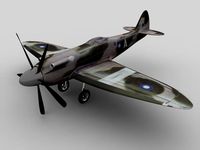
Spitfire 3D Model
...spitfire 3d model
3dexport
spitfire airplane
spitfire 3d model victormaciel 36251 3dexport
3d_export
$10

Spitfire 3D Model
...spitfire 3d model
3dexport
spitfire plane ww2 iphone android low poly cheap
spitfire 3d model *shine 32289 3dexport
3ddd
$1

Lamp SPITFIRE
...lamp spitfire
3ddd
eichholtz
lamp spitfire от производителя eichholtz
диаметр 40 мм
высота 66 мм
артикул 105586
3d_ocean
$15

Supermarine Spitfire
...port war world worldwar ww ww2 wwii
low polygon and very well detailed supermarine spitfire. check out my profile for more items!
turbosquid
$149

SPITFIRE MKIXC
... available on turbo squid, the world's leading provider of digital 3d models for visualization, films, television, and games.
turbosquid
$60

supermarine spitfire
... available on turbo squid, the world's leading provider of digital 3d models for visualization, films, television, and games.
turbosquid
$35
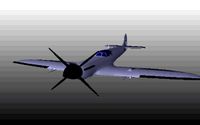
SPITFIRE.3DS
... available on turbo squid, the world's leading provider of digital 3d models for visualization, films, television, and games.
1936
turbosquid
$15

Human-1936
...turbosquid
royalty free 3d model human-1936 for download as on turbosquid: 3d models for games, architecture, videos. (1171114)
turbosquid
$129

Wooden runabout 1936
... model wooden runabout 1936 for download as max, obj, and fbx on turbosquid: 3d models for games, architecture, videos. (1665151)
3d_export
$20
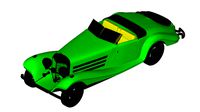
mercedes benz 540 roadster 1936
...mercedes benz 540 roadster 1936
3dexport
mercedes benz 540 roadster 1936
3d_export
$20

mercedes benz 500k roadster 1936
...mercedes benz 500k roadster 1936
3dexport
mercedes benz 500k roadster 1936
3d_export
$5

b m w 328 1936-1940
...b m w 328 1936-1940
3dexport
b.m.w. 328 1936-1940
3d_export
free

hydroelectric power station 1936
...ement, a sample of 1936. with a modern finish after reconstruction. the original finish is facing brick. it has 260,527 polygons.
3ddd
free

Велосипед Sky King 1936
... детский велосипед , трицикл
для детей 3-6 лет
размер: 83.82(l)*48.26(w)*71.12(h) cm
3d_export
$22

Tricycle Sky King 1936 3D Model
... 3d model
3dexport
bike bicycle retro 1936 skyking vintage children kids
tricycle sky king 1936 3d model greyzmey 100640 3dexport
turbosquid
$30

ANTIQUE 1936 TELEVISION TEXTURED.c4d
... available on turbo squid, the world's leading provider of digital 3d models for visualization, films, television, and games.
3d_export
$10

328-1936
...mited to rotating the model around itself note: this model contains poles (more than 5 edges that converge to a single vertex.)”
M
turbosquid
$20
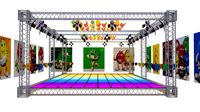
Stage M&M
... available on turbo squid, the world's leading provider of digital 3d models for visualization, films, television, and games.
3ddd
$1

bag m&m's
...bag m&m's
3ddd
bag m&m's
bag m&m;'s
3d_export
$35
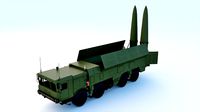
iskander m
...iskander m
3dexport
iskander m 3d model
design_connected
$7
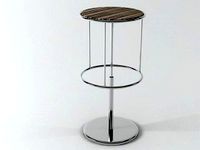
barstool m
...barstool m
designconnected
barstool m computer generated 3d model.
3ddd
free
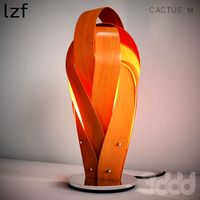
CACTUS M
...cactus m
3ddd
cactus , lzf
настольный светильник cactus m
производитель lzf
design_connected
$13
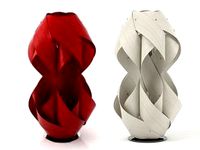
Anfora M
...anfora m
designconnected
lzf anfora m computer generated 3d model. designed by herranz, miguel.
3ddd
$1
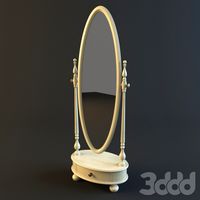
зеркало M Gastone
...зеркало m gastone
3ddd
зеркало m gastone
зеркало m gastone
design_connected
$16

Dogon M
...dogon m
designconnected
emmemobili dogon m chairs computer generated 3d model. designed by ferruccio laviani.
design_connected
$9
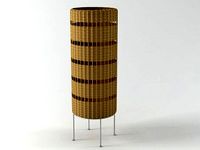
Sunlight M
...sunlight m
designconnected
bonacina pierantonio sunlight m computer generated 3d model. designed by bizzozzero, franco.
3ddd
$1
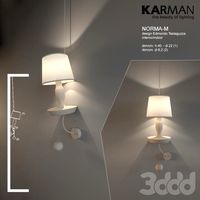
Karman / Norma-M
...arman , norma-m
http://www.karmanitalia.it/en/prodotto/norma-m/norma-m-ap640n/
